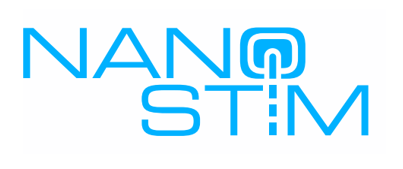NANOSTIM | First Experimental Workgroup Session
Dec 19, 2020

FIRST EXPERIMENTAL WORKGROUP SESSION
The first presential experimental working session of the NanoStim Consortium took place, on the 19th of December 2020, at University of Minho (UM), Guimarães, Portugal. Researchers and members of the Centre of Physics (UM), Research Centre in Digitalization and Intelligent Robotics (CeDRI) from Polytechnic Institute of Bragança (IPB) and Nelson Azevedo Terapias Globais (NATG) Physiotherapy Clinic had the first opportunity to really work together, sharing information, skills and expertise.
The Laboratory of Thin Films preparation set the stage for this meeting
The morning was spent in the Laboratory of Thin Films, where the nanosensors to be used in the wearables for the elderly rehabilitation are being developed. By personally visiting the laboratory, the NanoStim partners had the opportunity to become acquainted with the physical process of thin films' deposition, asking questions and exposing doubts.
Diana Pais, a researcher from the UM team, offered to serve as a volunteer for electromyographic (EMG) monitoring on her thigh muscles (Vastus Medialis Oblique and Vastus Lateralis). Also, Functional Electrical Stimulation (FES) was tested while the EMG signal was recorded.
The physiotherapist Nelson Azevedo used his expertise to explain how to correctly position the electrodes on the upper limb, underlining its importance on data's accuracy. After that, he performed several FES tests, typically used in rehabilitation settings, while differences in EMG signal were detected and analysed.
The researchers of CeDRI-IPB were particularly interested in the questions related to data processing and the specificities of the devices used, envisaging the major goals of the NanoStim Project.
“This workgroup session was a great opportunity to clarify a lot of questions and to establish the next steps. It was crucial to the successful progress of the project” – Filipe Vaz, leader researcher from UM.
A GREAT INITIATIVE TOWARDS BETTER RESULTS!
In this first session, only conventional electrodes and commercial devices were tested and exploited. Still, this brainstorming worked as a launching pad for the development of new flexible dry sensors that will be electronically connected into a wearable, able to acquire EMG and electro-stimulate elders’ muscles in a disruptive home caring solution.
Four hours was the time taken to a very profitable and collaborative action involving even more all the researchers in this challenging and stimulating project. More than a project, NanoStim is a trully provocation to contribute on advancing inclusive health & care solutions for ageing well.